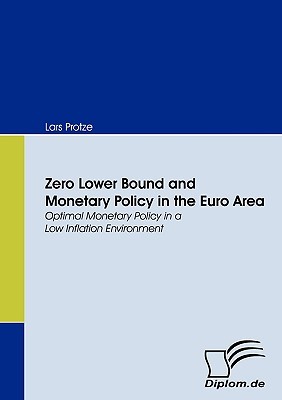
- We will send in 10–14 business days.
- Author: Lars Protze
- Publisher: BoD
- Year: 2009
- Pages: 184
- ISBN-10: 3836664909
- ISBN-13: 9783836664905
- Format: 21 x 29.7 x 1 cm, minkšti viršeliai
- Language: English
- SAVE -10% with code: EXTRA
Zero Lower Bound and Monetary Policy in the Euro Area (e-book) (used book) | bookbook.eu
Reviews
Description
Central banks around the world try to influence economic activity by altering nominal interest rates which will have an effect on the real rate. However, this is only possible as long as interest rates are above zero. The case of Japan showed that monetary policy was helpless as nominal rates approached zero. This Book starts with an overview of monetary policy with the restriction that interest rates can not fall below zero. Then optimal monetary policy in a low inflation environment is treated. This is done by using a New Keynesian model with sticky prices. Therefore the model and the necessary optimality conditions will be derived (this will be done extensively in the appendix). After deriving the optimality conditions it will be shown how optimal monetary policy will be conducted. To evaluate the outcome of monetary policy a welfare function will be derived. It will be shown how the welfare function to evaluate the outcome of monetary policy is derived from the utility function of the household. As a result it will be shown that a price level target is welfare maximizing although most central banks nowadays use an inflation target instead. Reasons for an inflation target will be shown in the discussion of the model. The second part of the book describes the inflation dynamics in the euro area to see what monetary authority shall do to prevent the economy from falling into the vicious circle of deflation. Two wage contracting models that describe inflation dynamics in the euro area reasonably well will be explained, the Fuhrer-Moore und the Taylor contracting. After showing the optimal policy it will be discussed how severe the zero bound in the euro area is and what policy alternatives are left when monetary policy is restricted. Finally the results obtained will be discussed to see the pitfalls of price level targeting. The large appendix provides the complete derivation of the model and the optimality conditions.
EXTRA 10 % discount with code: EXTRA
The promotion ends in 23d.20:26:41
The discount code is valid when purchasing from 10 €. Discounts do not stack.
- Author: Lars Protze
- Publisher: BoD
- Year: 2009
- Pages: 184
- ISBN-10: 3836664909
- ISBN-13: 9783836664905
- Format: 21 x 29.7 x 1 cm, minkšti viršeliai
- Language: English English
Central banks around the world try to influence economic activity by altering nominal interest rates which will have an effect on the real rate. However, this is only possible as long as interest rates are above zero. The case of Japan showed that monetary policy was helpless as nominal rates approached zero. This Book starts with an overview of monetary policy with the restriction that interest rates can not fall below zero. Then optimal monetary policy in a low inflation environment is treated. This is done by using a New Keynesian model with sticky prices. Therefore the model and the necessary optimality conditions will be derived (this will be done extensively in the appendix). After deriving the optimality conditions it will be shown how optimal monetary policy will be conducted. To evaluate the outcome of monetary policy a welfare function will be derived. It will be shown how the welfare function to evaluate the outcome of monetary policy is derived from the utility function of the household. As a result it will be shown that a price level target is welfare maximizing although most central banks nowadays use an inflation target instead. Reasons for an inflation target will be shown in the discussion of the model. The second part of the book describes the inflation dynamics in the euro area to see what monetary authority shall do to prevent the economy from falling into the vicious circle of deflation. Two wage contracting models that describe inflation dynamics in the euro area reasonably well will be explained, the Fuhrer-Moore und the Taylor contracting. After showing the optimal policy it will be discussed how severe the zero bound in the euro area is and what policy alternatives are left when monetary policy is restricted. Finally the results obtained will be discussed to see the pitfalls of price level targeting. The large appendix provides the complete derivation of the model and the optimality conditions.


Reviews